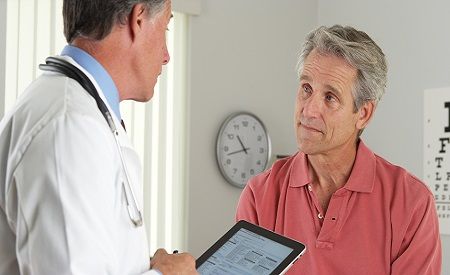Article
Cardiologists Far More Likely to See Diabetic Patient than Endocrinologists
Author(s):
A year-long outpatient care study showed that patients with type 2 diabetes and comorbid cardiovascular disease are 5 times as likely to visit a cardiologist.

Analysis of a Connecticut-based hospital found that patients with type 2 diabetes (T2D) were almost 3 times as likely to have an outpatient encounter with a cardiologist than they would an endocrinologist.
The findings, presented at the Endocrine Society (ENDO) 2019 Annual Scientific Sessions in New Orleans, LA this weekend, also reported that patients with T2D and coexisting cardiovascular disease (CVD) were more than 5 times as likely to see a cardiologist than an endocrinologist over 1 year.
A team of investigators from Yale New Haven Hospital and the Saint Luke’s Mid-America Heart Institute, led by Felona Gunawan, MD, of the Section of Endocrinology at Yale School of Medicine, assessed diabetic patients’ tendencies for care. Gunawan and colleagues cited recent large-scale CVD outcome trials which demonstrated significant benefits of novel glucose-lowering therapy classes sodium glucose co-transporter 2 (SGLT-2) inhibitors and glucagon-like peptide-1 (GLP-1) receptor agonists.
Noting that current treatment guidelines recommend these agents for care in patients with T2D and comorbid CVD, investigators explained endocrinologists more frequently prescribe patients SGLT-2 inhibitors or GLP-1 receptor agonists than cardiologists do.
“Some, however, have proposed that cardiologists should take a more active role in prescribing these GLAs for CV risk reduction,” they noted. Therefore, the study sought to understand how many opportunities specialists of either field would have to even prescribe therapy to patients over 1 year.
The team reviewed the electronic records of adult patients with T2D who had reported outpatient encounters within the Yale New Haven Hospital System in 2017. They analyzed patient demographics, CVD diagnostic categories, the number of encounters with cardiologists and endocrinologists, provider types, and visit diagnoses.
Their parameters drew 78,878 observed patients with T2D. Mean patient age was 66.7 years, with 51% reported as female, and 40.1% having been diagnosed with established CVD.
The cardiologist:endocrinologist outpatient encounter ratio was 2.6 (51,954 vs 20,337) for patients with lone T2D, and 5.3 (43,482 vs 8264) for those with T2D and CVD. Among the observed CVD diagnostic categories, patients with chronic heart failure (HF) reported the greatest outpatient encounter ratio (8.4).
Last week, discussion and data presentation at the American College of Cardiology (ACC) 2019 Annual Scientific Sessions highlighted the benefit of HF care with SGLT-2 inhibitors. Gregg C. Fonarow, MD, director of the Ahmanson-UCLA Cardiomyopathy Center and co-chair of the UCLA Preventative Cardiology Program, highlighted the drug class’ proven benefits for CVD mortality-based outcomes in an interview with MD Magazine®.
“In the trials of outpatients with T2D, with or without HF, there has been remarkably consistent findings of reduction in hospitalization for HF and cardiovascular deaths, and with similar benefits whether the patient has preexisting HF or not,” Fonarow said. “So, for patients with T2D trying to prevent HF from developing—but more importantly, for patients with preexisting HF and comorbid T2D—this is a way of giving them medication that manages blood sugar and helps improve cardiovascular outcomes.”
Investigators concluded that, in order to optimize the proven benefits of SGLT-2 inhibitors and GLP-1 receptor agonists in these patient populations, cardiologists should ensure they capitalize on the frequent outpatient encounters by adhering to new treat guidelines and prescribing therapies when appropriate.
“Educational programs pertaining to these emerging treatment paradigms should target cardiologists in addition to endocrinologists (and primary care physicians),” they concluded.
The study, “Cardiologist vs. Endocrinologist Encounters in Patients with T2D and CVD: Potential Implications for Glucose-Lowering Therapy Use and Education,” was presented at ENDO 2019.




